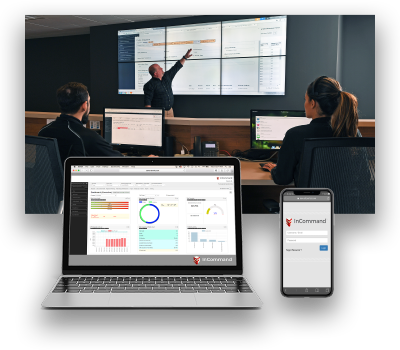Erez Yalon, Head of Security Research, Checkmarx
Cloud services have come a long way, from Infrastructure as a Service (IaaS), via Platform and Software as a Service (PaaS/SaaS), all the way to Serverless computing. Now we see the rise of Function as a Service (FaaS) that abstracts many layers of production. While these services are not without their downsides, they are convenient, cost-effective and allow vendors to concentrate on the important things. With these services offered now by giants like Amazon, Google, and Microsoft, we can expect this trend to continue.
Andrew Howard, Chief Technology Officer, Kudelski Security
In the coming year, we will continue to see increasing adoption of cloud services (IaaS, SaaS, PaaS) and cloud-based security services (e.g. SIEM as a Service, IDaaS, Secure web gateway).
Moreover, the base security risk in the cloud will become more palpable. We may have our first major cloud breach where the company blames the cloud provider. Base security given by cloud providers is just that, base level, but the extent of security is really the responsibility of the organization using the platform. CISOs will have to develop new strategies to manage efficiently the cyber risks associated with cloud adoption and migration. If enterprises don’t start assuming their role in security we will be seeing more and more breaches.
Ironically, staffing shortages faced in security could be exacerbated further by the move to the cloud, as this requires very specialized skills that are in high demand and short supply. In 2018, organizations didn’t fare very well when it came to finding people with cloud skills. Individuals with these skills are not only hard to find but also in demand and thus very expensive. We’ve noticed a trend in companies outsourcing to consultancy companies to meet their demand, rather than trying to find and hire them in-house. Kudelski Security has skilled employees in this area in our CTO office. In 2019, we expect this trend to continue, but more individuals are obtaining AWS and Azure certifications to take advantage of being in-demand and garnering higher-paying jobs, so as we move into 2020 and beyond, the resources are likely to become more readily available.
Ambuj Kumar, Co-founder and CEO, Fortanix
GCP under new leadership will be the one to watch out for. While developers are good entry points in an organization, a strong enterprise sales team is needed to navigate the challenges of cloud migration.
IBM Cloud Data Shield and Azure Confidential Cloud both enable a new level of security to cloud applications, protecting them even from operating systems, cloud providers, and infrastructure threats. Will these services finally convince the “cloud holdouts” to bring their sensitive applications to the cloud?
Lee Atchison, Senior Director, Strategic Architecture, New Relic
Cloud management and control is going to be important. Before, it was “move to the cloud at all costs.” In 2019, the “at all costs” part will go away, and cloud waste management will become more important.
I don’t see a significant change in global cloud trends in 2019, maybe an even greater focus on keeping data in-country and specifically “out of the US,” as the geopolitical environment heats up even more. Don’t expect AWS to go away, as it is still growing faster than all other cloud providers combined. It is good to have healthy competition and having Azure, Google Cloud Platform and IBM be more viable is good for the industry. The growth of Azure specifically will bring more cloud success in Europe.
Tori Wieldt, Developer Advocate, New Relic
More organizations will migrate aggressively to the public cloud and build net-new applications there. Whether workloads are in the public cloud or on-premises, IT teams increasingly will seek a platform that moves away from “static” resource allocation to “dynamic” resource allocation – which means automatically scaling, dynamic routing, functions as a service and other “serverless” technologies.
James Sivis, VP of Marketing, Nerdio
A couple of strong trends come to mind. One is the ever-growing performance requirements for IT infrastructure driven by increasingly powerful, and hence resource hungry, lines of business apps. Just as we need to keep upgrading our mobile phones to support new/updated apps and OSs, organizations have to do the same from an IT perspective. In terms of which verticals are demonstrating demand to upgrade their infrastructure overall, regardless of driver, they are government and other non-profits. The reason is simple – they tend to have the greatest differential between state-of-the-art and what they have currently, i.e. often times outdated on-prem infrastructure.
In the channel, there are other trends at work. One is consolidation in the managed services provider (MSP) space, just as happened in the past with VARs. Relatedly, there is movement from tangential spaces such as MPSs and MSSP moving into MSP services, due to a desire to expand their offerings and customer/revenue base. And MSPs are continuing move from break-fix activities onto higher-value, and hence margin, services – that this shift is reaching now down to the smallest of MSP. For them, it is not a matter of when anymore but how, and how soon.










